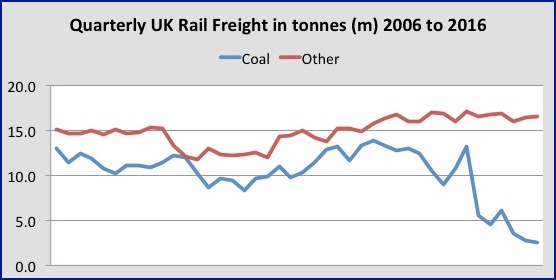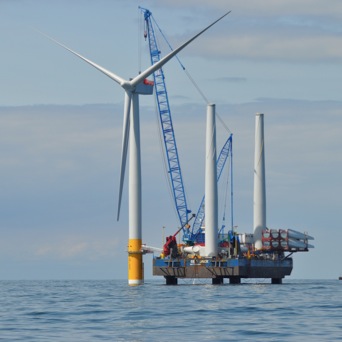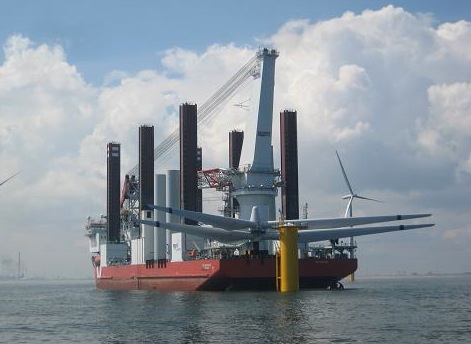
UK Ports and the energy market
Ports occupy a key role as transport hubs for feedstocks and fuels in the UK energy market. From the age of steam and its requirement for coal, to the location of oil refineries on key estuaries, UK ports have played a pivotal role in keeping the lights on. As the energy generation market evolves, for example away from coal burning, then port requirements change and the demand for product storage space and onward shipment also change. The quarterly trend chart below (source ORR) illustrates this dramatic decline of coal tonnage transported from UK ports of entry to power stations.

A number of North Sea ports have established themselves as logistics hubs to support offshore oil and gas operations. In the North Sea oil and gas sector, Aberdeen Harbour is at the heart of the world class cluster of oil service companies in that City. Other ports in North East Scotland such as Montrose and Peterhead are also providing essential services not only to the further development and exploration of North Sea Oil & Gas but also for the considerable task of decommissioning platforms and pipelines that have completed their life cycles. This will be a complex process which will take place in a hostile offshore environment and it will challenge the industry on many fronts – technological, economic, environmental and health and safety. Ports will play their key role to service this huge logistical task. Around 470 installations in UK waters, 10,000 kilometres of pipelines, 15 onshore terminals and around 5,000 wells constitute part of the infrastructure that will eventually need to be decommissioned. Current total costs for decommissioning the UK Continental Shelf (UKCS) have been estimated at £20-25 billion (source Scottish Enterprise).
As energy costs escalate and the environmental impacts of carbon emissions move into ever higher focus, the move to renewable sources of energy generation has generated new traffic flows and activities at UK ports. Several ports now provide a wide range of services and facilities for offshore wind farm developers because of their locational advantages both at installation and also for the longer term operational and maintenance support. Major global companies and technology developers have established bases at a number of the UK’s smaller ports such as Blyth, Ramsgate, Mostyn, Barrow and Grimsby East to support this new emerging sector for energy generation. In Hull Siemens and ABP have embarked upon the creation of Green Port Hull to develop manufacturing and logistics facilities for wind turbine and blade manufacture. This is expected to be a catalyst for further cluster development. At an earlier stage in its life cycle, the Able Marine Energy Park on the Humber South Bank is moving through the consenting process and seeking partners for development adjacent to the port of Immingham, the UK's largest individual port by tonnage.


Images courtesy of RWE and EDF Energy Renewables
In addition to offshore wind power developments, a number of UK ports are actively engaged with power generators for import, handling and supply of biomass wood pellets for the electricity supply industry. Significant investments by Drax at Selby is the main driver.